 W
WHDMS Allart, a brig launched at Copenhagen in June 1807, was amongst the ships taken by the British after the second Battle of Copenhagen. In British service, she was recaptured by Danish-Norwegian gunboats after venturing too close inshore. Her subsequent service was in the Dano-Norwegian Navy's Norwegian Brig Division, which harried enemy frigates and convoys in Norwegian waters. On the separation of Denmark from Norway in 1814, Allart transferred to the Norwegian navy, who sold her in 1825.
 W
WHMS Badger was a brig in service with the Royal Navy in the late eighteenth century. She is famous as the first Royal Navy ship to be commanded by Horatio Nelson.
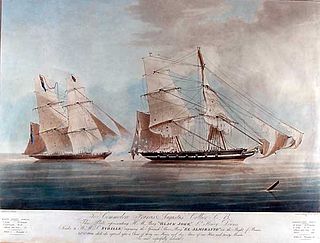 W
WThe third HMS Black Joke was probably built in Baltimore in 1824, becoming the Brazilian slave ship Henriquetta. The Royal Navy captured her in September 1827 and purchased her into the service. The Navy re-named her Black Joke, after an English song of the same name, and assigned her to the West Africa Squadron. Her role was to chase down slave ships, and over her five-year career she freed many hundreds of slaves. The Navy deliberately burnt her in May 1832 because her timbers had rotted to the point that she was no longer fit for active service.
 W
WHMS Boxer was a 12-gun Bold-class gun-brig built and launched in July 1812. The ship had a short service history with the British Royal Navy before the 16-gun USS Enterprise captured her near Portland, Maine in September 1813. She then went on to have at least a decade-long commercial career.
 W
WHMS Columbine was a Cruizer-class brig-sloop launched in 1806. She served on the North America station, in the Mediterranean, off the Portuguese coast, and in the West Indies during the Napoleonic Wars. In 1823 she served briefly off Greece before wrecking off the Peloponnese in 1824.
 W
WCrachefeu was a French Navy gun brig launched in 1793. Sir Richard Strachan's squadron captured her in 1795 in Cartaret Bay, and the Royal Navy took her into service as HMS Crachefeu. She then sailed to the West Indies where she broken up in 1797, or possibly around 1802.
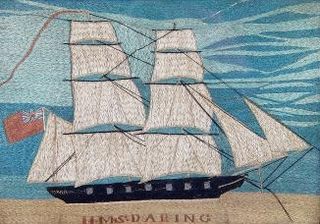 W
WHMS Daring was a 12 gun-brig of the Royal Navy which became part of the Experimental Squadrons of both 1844 and 1845, and later served in the West Indies. She was sold in 1864.
 W
WDetroit was a 6-gun brig launched in 1798 as Adams in the United States. During the War of 1812 the British captured her, renamed her, and took her into the Provincial Marine. She served on Lake Erie during the War of 1812, giving the British control of the lake. The Americans briefly recaptured her, but she grounded and came under heavy fire. The Americans had to abandon her. The vessel was set afire and burnt.
 W
WDiligente was a French Navy a Naïade-class corvette, launched in 1794 as a brig. HMS Crescent captured her in the Antilles in 1800. The British took her into service as a 14-gun transport and sold her in 1814.
 W
WHMS Duke of Gloucester was a 10-gun brig of the Royal Navy which was launched at the Kingston Royal Naval Dockyard in Kingston, Ontario. A Provincial Marine vessel, during the War of 1812, the brig took part in several of the early engagements between British and American naval forces on Lake Ontario and the St. Lawrence River. While being repaired at York, Duke of Gloucester was captured by Americans in 1813. A month later the British destroyed the brig at the Battle of Sackett's Harbor.
 W
WHMS Eclipse was a French Navy Vésuve-class brick-canonnier or chaloupe-canonnière, (gunbrig) launched at Saint-Malo in 1793 as Volage. She was renamed Venteux in 1795 (possibly also Vérité on 30 May 1795, although this might have been a second ship of the same name. The British Royal Navy captured her in 1803 and took her into service as HMS Eagle, but then renamed her HMS Eclipse in 1804. She had a completely unremarkable career before the Navy sold her in 1807.
 W
WL'Espoir was a French brig-sloop that served for 9½ years in the French Navy before HMS Thalia captured her in September 1797. In her subsequent short career in British service as HMS Espoir she captured three prizes, with the capture in 1798 of the more heavily armed Genoese pirate Liguria earning her crew a clasp to the Naval General Service Medal. Espoir was laid up in 1799 and sold in 1804.
 W
WFaune was a French naval Abeille-class brig-corvette launched in 1804 to a design by François Pestel in 1803. She participated in the capture of HMS Blanche in July 1805. The Royal Navy captured Faune in August 1805. She was taken into service as HMS Fawn, but the last record of her dates to 1806. In 1807 the Royal Navy launched a new HMS Fawn.
 W
WGovernor Simcoe was a merchant schooner launched in 1793. The Provincial Marine acquired her in 1813 and renamed her after the British naval officer Sir Sidney Smith. She saw service on Lake Ontario during the War of 1812. The Royal Navy acquired her in 1814 and renamed her HMS Magnet. A few months later her captain had to blow her up to prevent the Americans from capturing the vessel.
 W
WHMS Griper was a Bold-class gun-brig of the British Royal Navy, built in 1813 by Mark Williams and John Davidson at Hythe. She participated in the 1819 expedition to the Arctic led by William Parry, made a voyage to Greenland and Norway in 1823, and took part in Parry's third expedition in 1824 as a support ship. Her crew in 1819, 1823, or 1824, qualified for the "Arctic Medal", which the Admiralty issued in 1857. She was eventually broken up in 1868.
 W
WHMS Kangaroo was British Royal Navy 18-gun brig-sloop of the Diligence class, launched in 1795 at Rotherhithe, England. She served in Home Waters and the Mediterranean Sea until she was sold in 1802.
 W
WThe Dutch brig Komeet was launched in 1789 at Amsterdam. HMS Unicorn captured her on the Irish station in 1795. The British Royal Navy took her into service as HMS Comeet; it renamed her HMS Penguin in 1798. It sold her in 1808.
 W
WHis Majesty's Armed Survey Vessel Lady Nelson was commissioned in 1799 to survey the coast of Australia. At the time large parts of the Australian coast were unmapped and Britain had claimed only part of the continent. The British Government were concerned that, in the event of settlers of another European power becoming established in Australia, any future conflict in Europe would lead to a widening of the conflict into the southern hemisphere to the detriment of the trade that Britain sought to develop. It was against this background that Lady Nelson was chosen to survey and establish sovereignty over strategic parts of the continent.
 W
WHMS Linnet was a 16-gun brig, built in 1814 by the Royal Navy at Ile aux Noix, Canada, as Niagara. Renamed Linnet and commanded by Commander Daniel Pring, RN, she served on Lake Champlain during the War of 1812. The Americans captured her in 1814 at the Battle of Lake Champlain at Plattsburgh, New York, and took her into service though she never sailed again. She was sold in 1825.
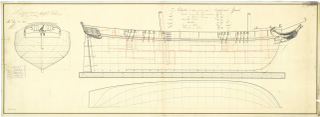 W
WMilan was a French brig built at Saint Malo, from plans designed by François Pestel that had already served for Curieux in 1800 and for Palinure in 1804. She served in the French Navy for four years before HMS Surveillante and Seine captured her. She became HMS Achates in the Royal Navy and served until after the end of the Napoleonic Wars.
 W
WUSS Viper – commissioned as USS Ferret – was a brig serving the United States Navy during the early days of the republic. Viper was assigned to enforce the Embargo Act of 1807 along the U.S. East Coast. During the War of 1812, while cruising in the Caribbean, she was captured by the more heavily armed British warships. She then served the Royal Navy as HMS Mohawk until the Navy sold her in 1814. While in British service she served in several actions that earned her crew the Naval General Service Medal,
 W
WHMS Monkey was launched in 1801 at Rochester. She served in the Channel, North Sea, and the Baltic, and was wrecked in December 1810.
 W
WNautilus was a schooner launched in 1799. The United States Navy purchased her in May 1803 and commissioned her USS Nautilus; she thus became the first ship to bear that name. She served in the First Barbary War. She was altered to a brigantine. The British captured Nautilus early in the War of 1812 and renamed her HMS Emulous. After her service with the Royal Navy, the Admiralty sold her in 1817.
 W
WThe French brig Néarque was an Abeille-class brig launched at Lorient in 1804. She made a voyage to the Caribbean in 1805. After the frigate HMS Niobe captured her in March 1806, the Royal Navy took her into Plymouth, but apparently laid her up in ordinary. She then disappears from the records until her sale in 1814.
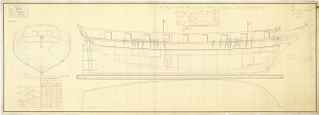 W
WNettuno was a French Illyrien or Friedland-class brig built at Venice and launched in June 1807. HMS Unite captured her a year later off Zara. The Royal Navy took her into service as HMS Cretan. She served in the Mediterranean. She was sold in 1814. Between 1815 and 1831 she made five voyages as a whaler.
 W
WPalinure was the nameship for the Palinure-class of 16-gun brigs of the French Navy, and was launched in 1804. In French service she captured Carnation before Circe captured her in turn. After being taken into the Royal Navy as HMS Snap, she participated in two campaigns that qualified her crew for the Naval General Service Medal (NGSM). She was broken up in 1811.
 W
WHMS Pandora was a 3-gun brig of the Royal Navy, in service from 1833 to 1862.
 W
WHMS Pyramus was a fifth-rate 36-gun frigate launched at Portsmouth in 1810. During the Napoleonic Wars she captured some small privateers. She was hulked in 1832–1833 at Halifax, Nova Scotia. The vessel was sold and broken up in 1879.
 W
WHMS Royalist was a Royal Navy ship, built as the Mary Gordon and bought by the Navy on 9 July 1841 for £7200.
 W
WHMS Sappho was a Royal Navy brig that gained public notoriety for causing a diplomatic incident over the slave trade with the United States of America and then went missing off the Australian coast in 1857–58.
 W
WHDMS Sarpen was a brig of the Royal Dano-Norwegian Navy, in which she served from 1791 until the British seized her in 1807. While in Dano-Norwegian service she participated in an indecisive action at Tripoli, North Africa. She served the Royal Navy as HMS Sarpen from 1808 until 1811 when she was broken up. During her brief British service she participated in the Walcheren Expedition. Her name is that of a waterfall on the Norwegian river Glomma.
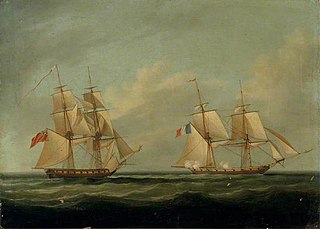 W
WHMS Seaforth was the French privateer Dame Ernouf, which HMS Curieux captured in 1805. The Royal Navy took her into service, but she foundered later that year.
 W
WSylphe was an Abeille-class 16-gun brig-corvette of the French Navy. The class was built to a design by François Pestel. The British captured her in 1807 and took her into the Royal Navy as HMS Seagull, but apparently never used her in any capacity. She was sold in 1814.
 W
WHMS Seagull was the name vessel for the Seagull class of brig-sloops of the Royal Navy. She was launched on 1 July 1805 and saw active service under the British flag in Danish waters until 19 June 1808 when Dano-Norwegian forces sank her. The Danes raised her and refitted her for service in the Dano-Norwegian Navy, which she served until the end of the "English Wars" in 1814. She then was transferred to the Norwegians. She was finally decommissioned in 1817.
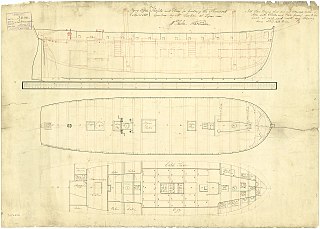 W
WHMS Shamrock was a Bold-class gun-brig launched in 1812. In 1813-14 she played an important role in the captures of Cuxhaven and Glückstadt. After the war she became a survey vessel, and then a quarantine ship. She was delivered to the Coast Guard in 1833 as a watch vessel and was re-designated WV18 in 1863. She was sold in 1867.
 W
WHMS Sheldrake was a Royal Navy 16-gun Seagull-class brig-sloop. She was built in Hythe and launched in 1806. She fought in the Napoleonic Wars and at the Battle of Anholt during the Gunboat War. She was stationed in the mouth of the River Loire in 1814 after Napoleon's abdication to prevent his escape to America. She was sold in 1816.
 W
WHMS Sheldrake was aRoyal Navy 10-gun Cherokee-class brig-sloop launched in 1825 at Pembroke. She was sold for scrap in 1855.
 W
WHMS Snake was launched in 1797 as the only member of her class of brig-sloops. She captured or destroyed two French privateers and one Danish privateer. She also captured numerous small merchantmen, but spent time escorting convoys to and from the West Indies. She was sold in 1816.
 W
WHMS Speedy was a 14-gun Speedy-class brig of the British Royal Navy. Built during the last years of the American War of Independence, she served with distinction during the French Revolutionary Wars.
 W
WHMS Spitfire was a Tisiphone-class fireship of the Royal Navy. She served during the years of peace following the end of the American War of Independence, and by the outbreak of the French Revolutionary Wars, had been reclassified as a 14-gun sloop-of-war. Spitfire went on to serve under a number of notable commanders during a successful career that saw her capture a considerable number of French privateers and small naval vessels. She spent most of her career in Home waters, though during the later part of her life she sailed further afield, to the British stations in North America and West Africa. She survived the Napoleonic Wars and was eventually sold in 1825 after a period spent laid up.
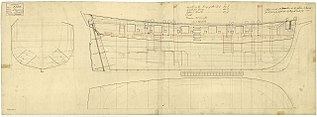 W
WHMS Staunch was a mercantile vessel that the Royal Navy purchased in frame on the stocks at Kent. She had a brief, unremarkable career until the Navy sold her 1803.
 W
WThe French brig Suffisante was launched in 1793 for the French Navy. In 1795 the Royal Navy captured her and took her into service under her existing name. HMS Suffisante captured seven privateers during her career, as well as recapturing some British merchantmen and capturing a number of prizes, some of them valuable. She was lost in December 1803 when she grounded in poor weather in Cork harbour.
 W
WLaunched in 1759, the third HMS Supply was a Royal Navy armed tender that played an important part in the foundation of the Colony of New South Wales. The Navy sold her in 1792. She then served commercially until about 1806.
 W
WHMS Turbulent was a Confounder-class 12-gun gun-brig in the Royal Navy. She was the first ship to bear this name. Built at Dartmouth, Devon by Tanner, she was launched on 17 July 1805. The Danes captured her in 1808. She was sold in 1814.
 W
WHMS Vincejo, was the Spanish naval brig Vencejo, which was built c.1797, probably at Port Mahon, and that the British captured in 1799. The Royal Navy took her into service and she served in the Mediterranean where she captured a privateer and a French naval brig during the French Revolutionary Wars. After the start of the Napoleonic Wars, the French captured Vencejo in Quiberon Bay in 1804. The French Navy took her into service as Victorine, but then sold her in January 1805. She then served as the French privateer Comte de Regnaud until the British recaptured her in 1810. The Royal Navy did not take her back into service.
 W
WThe French brig Voltigeur was a Palinure-class brig launched in 1804. The British captured her in 1806 and renamed her HMS Pelican. She was sold in 1812.
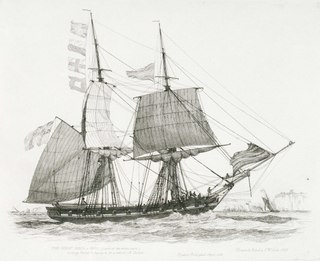 W
WHMS Wolf was a 14-gun brig of the Royal Navy that was launched in 1814 from Woolwich Dockyard, too late for the war. The Navy sold her 1825 and she then became a merchant and whale fishing vessel. She was wrecked in the South Seas in 1837.